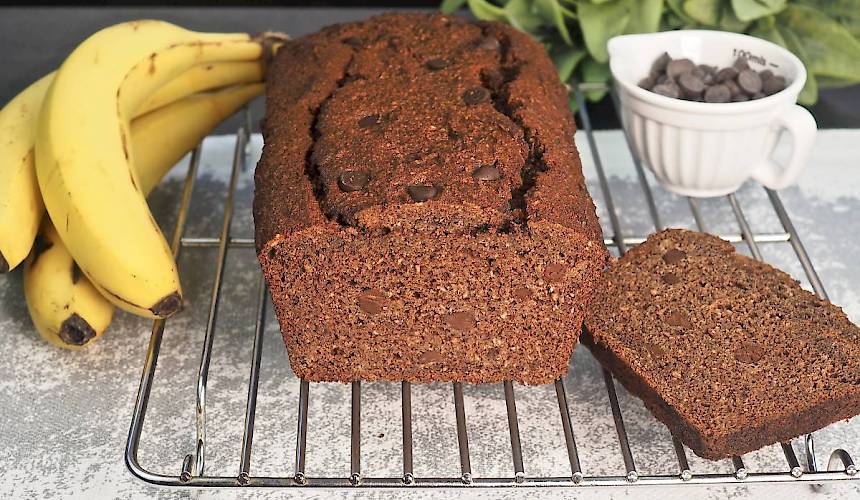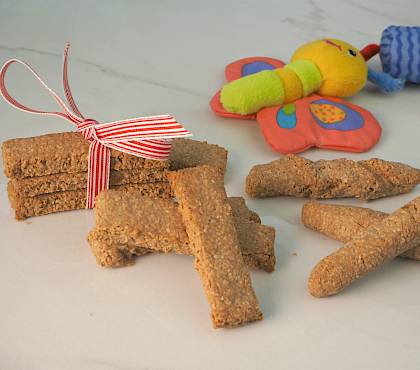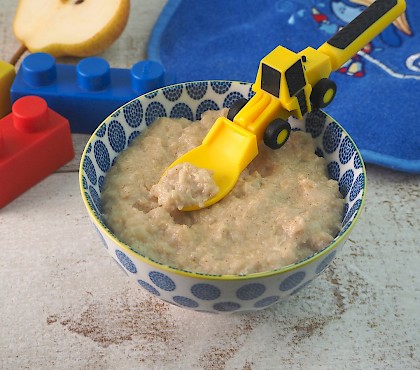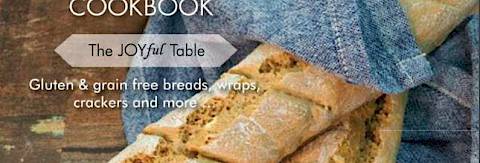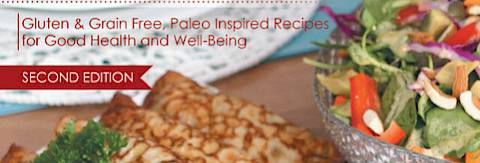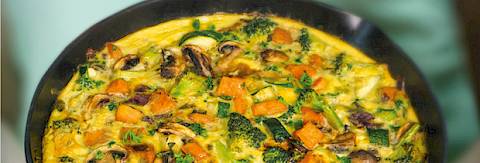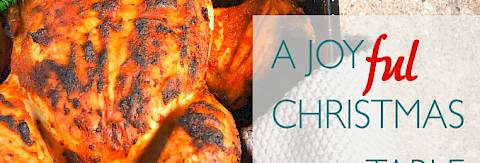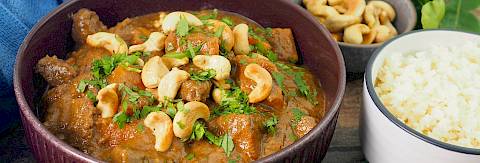
Chocolate Coconut Banana Bread
- Serves: 1 loaf
- Prep Time: 00:10
- Cooking Time: 00:55
This banana bread is the perfect kids' lunch box treat. It's full of flavour and packed with protein. As well as being moist and chocolatey the coconut and quinoa flakes give it a lovely texture. Being nut-free it's suitable for children to take to school or to serve at kids birthday parties and the big kids will also enjoy it with their cuppa.
Ingredients
* Please click on the green icon next to the ingredients listed below for extra details and helpful information.
- 3 Lge ripe banana(s), each broken into 3 pieces
- 1/2 cup ghee, grass-fed butter or coconut oil (melted)
- 1/2 cup honey (unprocessed)
- 3 Lge egg(s)
- 2 tsp vanilla extract (organic)
- 1/2 cup coconut flour
- 1/3 cup quinoa flakes (organic)
- 1/3 cup coconut - finely-shredded (organic)
- 1/3 cup arrowroot flour, or tapioca
- 1/3 cup cacao raw powder
- 3/4 tsp baking soda (bicarb)
- 1/4 tsp fine sea salt
- 1/3 - 1/2 cup organic 70% dark chocolate, chips/drops
Directions
Preheat oven to 170c (fan-forced). Line a 21 x 10cm loaf tin with baking paper.
Add the bananas, ghee (or coconut oil), honey, eggs and vanilla to a food processor and blend for approximately 18 seconds to combine well.
Add the coconut flour, quinoa flakes, desiccated coconut, arrowroot, cacao, baking soda and salt and blend for 20 - 25 seconds.
Remove the blade and add the dark chocolate drops, mix through using a spatula to distribute the chocolate evenly. Spoon into the prepared tin and smooth the top.
Bake for 55 minutes or until cooked through (a skewer inserted should come out clean) and coming away from the sides of tin. Allow to cool in the tin for 25 minutes, then remove by lifting out with the baking paper and place on a wire rack to finish cooling.
Completely cool or refrigerate before slicing.
Keeps for up to 5 days (if it lasts that long) and can be frozen for up to 3 months.
You may also like
banana(s)
In a paleo diet it's best to eat bananas in moderation. They are excellent to use to naturally sweeten a recipe and then you can reduce or eliminate other sweeteners. Bananas are a very good source of vitamin B6, manganese, vitamin C, potassium, dietary fiber potassium, copper, so you can see they are healthy but I find it's best just no in large qualities due to their high natural sugars.
ghee
Ghee is a lactose-free ancient superfood. It is made by slow cooking and clarifying butter to remove the milk solids and lactose, it's pure butter fat. You can get the flavour of butter in your cooking without the dairy (please don't consume if you have an allergy to ghee). My favourite brands are Organic Valley Purity Farms or Puresoul grass-fed. It is also very easy to make yourself. Ghee has a high smoke point 485F/250C.
honey (unprocessed)
Use unrefined or raw honey. It is the most common natural sweetener in my recipes. It's best to buy local unprocessed honey as it has wonderful health benefits and can help with allergies. Generally honey sold in supermarkets has been processed. Honey possesses antiseptic and antibacterial properties.
egg(s)
I have used large free range or organic eggs from a 700g carton in my recipes. Eggs are one of the few foods considered to be a complete protein because they contain all 9 essential amino acids, also studies have shown that lutein (yellow colour) in egg yolks protects against the progress of early heart disease.
vanilla extract (organic)
Use an organic vanilla extract (not an essence) or vanilla powder. Vanilla makes a big difference to the flavour of a recipe, I recommend keeping to the quantities I have stated in a recipe. I prefer Madagascar pure vanilla extract manufactured by ‘Simply Organic’ and for powder, Vanillamax 100% pure, finely ground Madagascar vanilla beans produced by Bulletproof.
coconut flour
Coconut flour is made by drying and grinding the meat of a coconut to a fine texture. Coconut flour is a low-carb flour that's an excellent source of dietary fibre and protein. It's a good grain-free and nut-free alternative but does require a larger amount of liquid than normal when used for baked goods. When replacing in a recipe that calls for wheat flour (or almond meal), use this guide; 1 cup of regular flour = 1/3 cup coconut flour, add an extra egg and an extra 1/3 cup of liquid. It can be used in soups, gravies and stews as a thickener and adds a boost of nutrition. Coconut flour may promote stable blood sugar levels and a healthy heart. In addition, it may have antibacterial properties and aid digestion and weight loss. There are now quite a few brands of coconut flour available and they all seem to perform differently depending on how coarse the texture is. In my recipes, I used Organic Coconut Flour from 'Let's Do Organic' and 'Red Tractor Foods' I like their finer texture.
quinoa flakes (organic)
Quinoa flakes are essentially just pressed quinoa, each little quinoa seed is rolled flat to make a flake. Quinoa flakes are an excellent replacement for rolled oats which are a grain and high in phytic acid. Quinoa flakes are a complete protein, which means they contain all the essential amino acids and they are full of good fibre. They are very quick to cook as they are small and thin flakes and make great gluten-free porridge.
coconut - finely-shredded (organic)
In the majority of my recipes where I use dried coconut, I have used finely-shredded desiccated coconut (unless I have stated otherwise). Make sure you are purchasing unsweetened and organic - many regular brands contain preservatives (sulphur dioxide).
arrowroot flour
Arrowroot is a herb, the roots are cultivated for its starch properties. It is used in my recipes as a thickener and I also like combining it with almond meal to produce a much lighter texture, more like a gluten flour. I find the starch helps to bind the ingredients together. You can substitute tapioca flour, which is made from the dried roots of the cassava plant. Tapioca can be used in baking, it has a slightly sweet flavour. However, I do not recommend thickening with tapioca, as it has a stretchy, gummy texture. Supermarkets only sell in very small containers, which is not cost effective. Purchase from baking specialty stores, health food stores or online. ( When substituting for cornflour in recipes, 2 teaspoons arrowroot = 1 tablespoon cornflour/starch).
cacao raw powder
Raw cacao powder and cocoa are made from the same source but are so different. Cacao powder is raw, unsweetened and in it's natural state, it has a stronger flavour and you would use less than cocoa powder. It is so good for you; high in dietary fibre, iron and is a good source of magnesium and antioxidants. Cocoa has been heated and processed, the high heat when processing kills all the minerals and vitamins.
baking soda (bicarb)
Also known as Bicarbonate of Soda or Sodium Bicarbonate and is used as a rising agent in baking, it contains no gluten or grains. I use Bob's Red Mill baking soda as I find it rises better than other brands I've tried.
sea salt
Organic unbleached, unrefined organic Celtic sea salt or pink Himalayan salt is my salt of choice as these contain healthy minerals and trace elements that our body needs. Regular table salt has been bleached, refined and processed leaving minimal health benefits. If you choose to use regular table salt in my recipes you will need to reduce the quantity or the end result will be to salty.
dark chocolate
In some of my recipes I have used Paleo approved dark chocolate drops/chips, they are dairy, soy, and gluten-free (my favourite brands are, 'Absolute Organic' or 'Chef's Choice' certified organic 70% cacao, purchase online or from health food stores). I also used 70 - 85% organic dark chocolate blocks, they can be broken into pieces or melted for recipe. I also make my own chocolate from: cacao butter or coconut oil, raw cacao powder and sweetened with 100% maple syrup, pinch of sea salt and vanilla extract.


